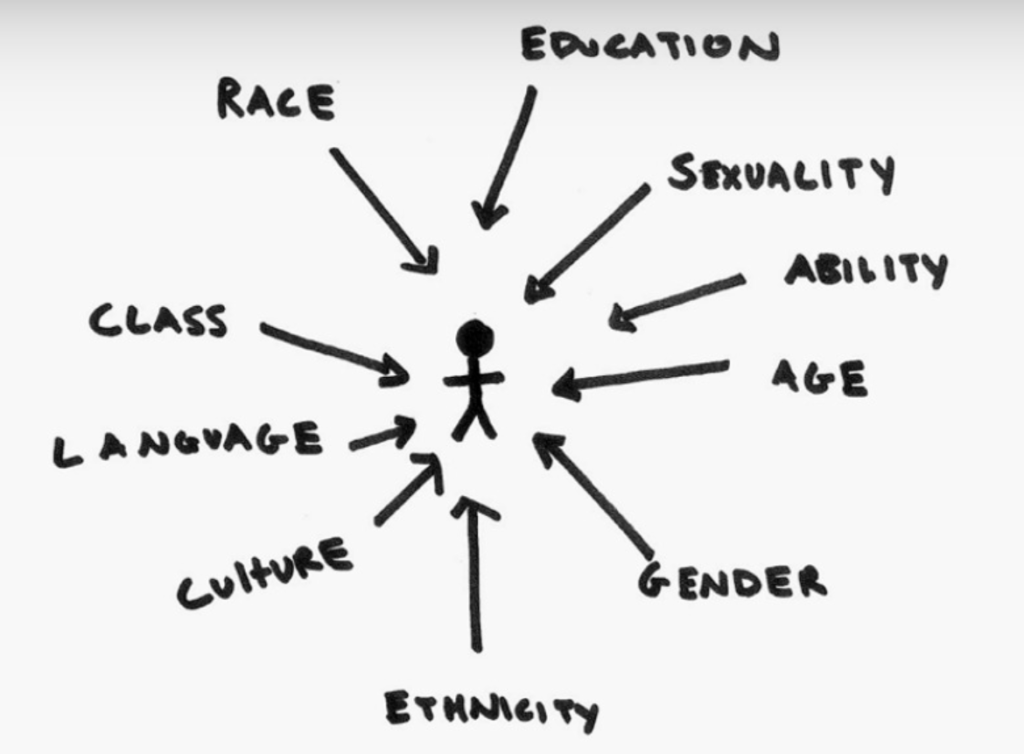Intersectionality and domestic violence

Domestic violence does not discriminate on the basis of race, religion or socioeconomic status. While domestic violence impacts the lives of all women of all backgrounds, society does not treat all victims of abuse equally. Social biases influence how society perceives survivors of domestic violence, and stereotypes often create barriers for care and assistance.
This notion that not all victims are treated the same piggybacks off an idea known as intersectionality. Intersectionality has become an increasingly popular term and is a useful lens for understanding oppression and privilege in our society. Coined by the famed scholar Kimberlé Crenshaw, intersectionality was first discussed in the context of the lives of African American women who struggled with what is known as a “double bind,” which described their positionality as being discriminated against on the basis of both gender and race. The term intersectionality has expanded from this original context to mean “A lens through which you can see where power comes and collides, where it interlocks and intersects. It’s not simply that there’s a race problem here, a gender problem here, and a class or LBGTQ problem there.”
An intersectional approach allows for a more holistic understanding of an individual and their positioning in societal hierarchies that seeks to erase binary understandings and account for the complexities of life, especially in regards to more privileged vs. more oppressed identity groups. An intersectional approach calls attention to the fact that we as a society cannot simply view an issue as one of race or gender, but must recognize that it is a problem that needs to take into account all parts of an individual’s identity. By only focusing on one identity marker (e.g. race or gender), we fail to both understand and resolve the problem completely.
In our work, using an intersectional approach allows us to better understand our clients in relation to how they are perceived in society. This can help us to understand barriers to care and complex traumas and oppressive systems impacting client’s daily lives. By better understanding this, we can better know how these factors may affect control tactics used by the abuser and a victim’s ability to get help and be believed by law enforcement.
For example, a client who is an immigrant and speaks limited English may have additional oppressive experiences and traumas unique to that population that compound with traumas experienced as a victim of domestic violence. For instance, this client may face greater barriers to getting care or be less likely to report the abuser to the authorities because of her limited English or because of fears regarding her immigration status. These “statuses” also may mitigate abusive tactics such as her abuser telling her that if she tells others about the abuse, he will report her to ICE. As such, her identity as a woman, an immigrant and non-English speaker are all important facets of her experience that are important to be aware of when looking at compounding traumas she has experienced as well as barriers to care. It also can provide insight into appropriate counseling strategies and culturally competent care.
Taking an intersectional approach allows for a better understanding of oneself (or one’s client) and how their identities are positioned in larger societal contexts. This can, in turn, allow agencies like Genesis to better understand barriers that women face in regards to seeking counseling, advocacy and legal resources. Additionally, an intersectional approach allows agencies (nonprofit and government) to extend their services to promote awareness of institutionalized forms of racism, sexism, etc. and how they impact domestic violence victims.
By addressing these larger issues and educating others on them, agencies like Genesis are able to help promote structural changes to help combat gender-based violence and challenge social norms surrounding domestic violence.
Citation
Columbia Law School (Ed.). (2008, June 8). Kimberlé Crenshaw on Intersectionality, More than Two Decades Later. Retrieved April 15, 2020, from https://www.law.columbia.edu/pt-br/news/2017/06/kimberle-crenshaw-intersectionality
